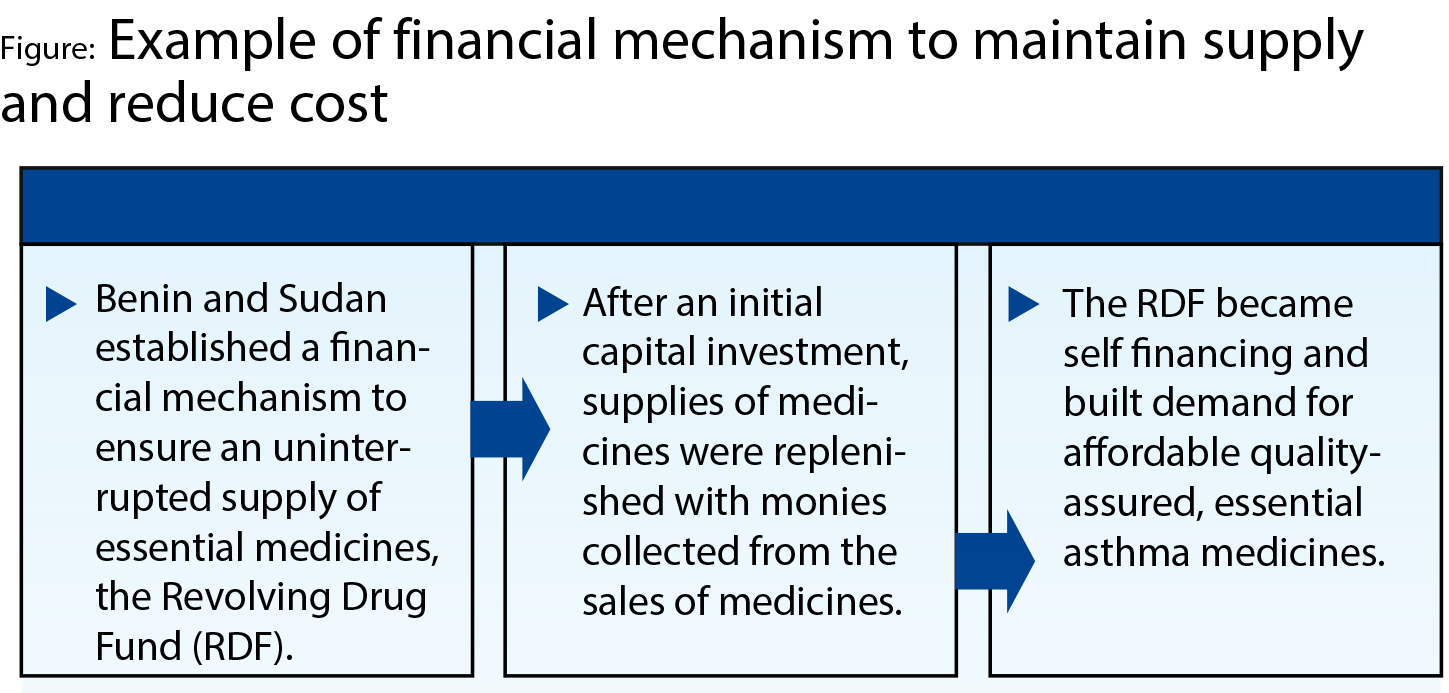
Asthma Management in Low-Income Countries.
Asthma is a major health problem in low- and middle-income countries (LMICs), resulting in unnecessary deaths and disability. Although the uptake of asthma management guidelines has been impressive over the past two decades, with examples of successful systematic strategies in some high-income countries and LMICs (Chapter 6), uptake by other regions and countries is slow, especially in LMICs. This chapter provides a summary of the current challenges facing asthma management in lowincome countries (LICs), which also apply to some but not all middle-income countries, and suggests several steps are needed to address these issues.
Special challenges
The goals for successfully managed asthma are the same in all jurisdictions; that people with asthma will have minimal symptoms, minimal side effects from any medicines, and have no lifestyle limitations. However, LICs face extra challenges to reach these goals. In addition to poor access to essential asthma medicines, other challenges include the lack of (i) well-organised health services that can provide long-term care, (ii) Standard Case Management (SCM) (Table 1), (iii) well-trained health professionals and (iv) adequate information systems. To achieve all these vital components where resources are scarce, commitment from governments, non-governmental organisations (NGOs) and global governmental agencies such as the World Health Organization (WHO) are needed.
For everyone with asthma, access to affordable quality-assured, essential asthma medicines is needed, appropriate to the asthma severity, with a β2-agonist for all and inhaled corticosteroids (ICS) for those with more frequent symptoms. Studies in LICs have found that healthcare workers often don’t prescribe ICS when indicated. When ICS is prescribed, patients may abandon the inhaler, inclined to believe that bronchodilators are more effective.
LICs experience more difficulty achieving an uninterrupted supply of essential asthma medicines, having enough well-trained health professionals, well organised health services to provide long-term care, and all the components of SCM. To turn this situation around requires action on several fronts.
Solutions
Correct diagnosis of asthma is of vital importance. Expert clinical assessment by trained health professionals is key. For adults and older children access to quality-assured spirometry (Chapter 12 Spirometry) may be useful in diagnosis and monitoring management. The International Union Against Tuberculosis and Lung Disease (The Union) asthma management guidelines were pilot-tested in nine countries in 1998. The measures were found to be feasible, effective and cost-effective. In four asthma pilot projects (Benin, China, El Salvador and Sudan) organised by The Union and its partners, the training of clinicians in implementation of guidelines and evaluation of outcomes was combined with the procurement of affordable, quality-assured, essential asthma medicines. After one year all countries observed a substantial reduction in asthma severity, visits to emergency services and hospitalisations.
Successful management also depends on promoting adherence of patients to treatment and clinicians to guidelines. Patients need to learn that ICS are not addictive or dangerous. People with symptoms first contact their health centres for assessment, so an effective network of responsible, trained health professionals, combined with adherence to guidelines, is essential.
In Huaiyuan County (China) in 2008 it was found that asthma patients presenting with cough or difficulty breathing were usually diagnosed with chronic bronchitis and treated with antibiotics, systemic steroids, xanthinederivatives and/or oral β2-agonists; ICS had never been available. What this project suggested was that asthma may be a hidden disease, yet it was feasible to train health workers to provide SCM for asthma.
In 2017 a combination inhaler of ICS and rapidly-acting long-acting β2-agonist (LABA) was added on the WHO Essential Medicines List, as a result of efforts led by The Union. This addition has great potential to improve asthma management because the relief of airflow limitation experienced with the rapidly acting LABA delivered at the same time with ICS may encourage greater adherence than that with bronchodilator and ICS in separate inhalers.
Political commitment needed
In LICs, the huge majority of asthma patients are being treated only on an emergency basis. The main goal of asthma treatment is to achieve and maintain clinical control. Political commitment with appropriate policies is critical for establishing and maintaining the long-term management of chronic asthma with functioning treatment chains and regular follow-up. This will reduce emergency visits, hospitalisations and financial drain, on struggling health systems.
Competitive prices for quality-assured essential medicines are vital to asthma control. However in LICs, they are more likely to be unavailable or of inadequate quality (Chapter 10) due to inadequate government regulation. The inhalers are more likely to be unaffordable, such that an ICS inhaler may cost the equivalent of two weeks wages. A situation analysis in Benin 2008 revealed that only 11% of patients were prescribed ICS, and in El Salvador 2005 and Sudan 2003 ICS were not available. The Union, through its Asthma Drug Facility 2008-2013, worked with several countries running pilot-projects which demonstrated that the price of essential medicines could be markedly reduced (Chapter 10); an illustrative example is in Figure 1.
Information systems are less likely to be well developed in LICs. Standardised recording and reporting for evaluating treatment results, identifying problem areas and lessons learned, was shown to work in The Union projects.
Conclusion
Asthma is an increasing major health problem in LICs. Governments in LICs should increase political commitment by: creating policies which make quality-assured essential asthma medicines available and affordable; adopting all components of SCM; and introducing evidence-based asthma control strategies.


